
Floyd Historic District is a national historic district located at Floyd, Floyd County, Virginia. It encompasses 164 contributing buildings, 1 contributing site, and 1 contributing object in the central business district and surrounding residential areas in the county seat of Floyd. They include residential commercial, institutional, and governmental buildings largely built between 1832 and 1955. Notable buildings include the Phlegar House (1816), Ferdinand A. Winston House, Henry Dillon House (1851), Floyd High School (1913), Horatio Howard Building (1897), Freezer Shirt Factory (1936), and Floyd County Courthouse (1951-1952). The district includes the separately listed Floyd Presbyterian Church and Glenanna.

Onancock Historic District is a national historic district located at Onancock, Accomack County, Virginia. The district encompasses 267 contributing buildings, 2 contributing sites, and 2 contributing objects. It includes most of the historic residential, commercial, and ecclesiastical buildings in the town of Onancock. The buildings represent a variety of popular architectural styles including the Late Victorian, Greek Revival, and Federal styles. Notable buildings include Scott Hall, Alicia Hopkins House (1830), Harmon House, Holly House (1860), Ingleside (1880s), Dr. Lewis Harmanson House (1899), Harbor Breeze (1912), First National Bank, Roseland Theatre, Market Street Methodist Church (1882), Naomi Makemie Presbyterian Church (1895), the Charles E. Cassell designed Holy Trinity Episcopal Church (1882), Onancock Town Hall, Onancock High School (1921), and Onancock Post Office (1936). Located in the district and separately listed are the Cokesbury Church, Hopkins and Brother Store and Ker Place.
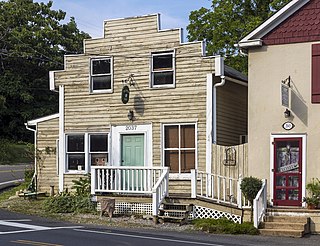
Millwood Commercial Historic District is a national historic district located at Millwood, Clarke County, Virginia.
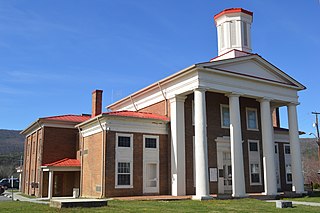
New Castle Historic District is a national historic district located at New Castle in Craig County, Virginia, United States. It encompasses 111 contributing buildings, 2 contributing sites, and 1 contributing object in the central business district and surrounding residential areas of New Castle. The focal point of the district is the Craig County Courthouse. It was built about 1850, and is a temple-form structure with shallow gable roof, a two-story tetrastyle Greek Doric order portico and wooden hexagonal cupola. Associated with the courthouse is the sheriff's house and old jail. Other notable buildings include the Central Hotel, First National Bank Building, Layman Insurance Agency building, Givens-McCartney House (1837), Caldwell-Berger-Lamb House, Bank of New Castle, Farmers and Merchants (F&M) Bank of Craig County (1917–1920), Wagener Brothers Store, Bill Caldwell General Store, George W. Craft, New Castle Methodist Episcopal Church, and Masonic Temple (1940).

Clifton Historic District is a national historic district located at Clifton, Fairfax County, Virginia. It encompasses 62 contributing buildings, 1 contributing site, and 1 contributing object in the town of Clifton. They include 53 residences, 3 churches, 4 commercial buildings, and 2 local government buildings mostly built between 1880 and 1910. Notable buildings include the Clifton Presbyterian Church (1871), Clifton Baptist Church (1912), Clifton Hotel (1869), the Mayhugh Tavern, the Ford House, the Cross House, Buckley Brothers Store, the M. M. Payne House (1903), and "Red Gables" (1908).
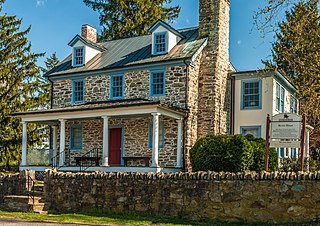
Atoka Historic District is a national historic district located at Atoka, Fauquier County, Virginia. It encompasses 11 contributing buildings in the rural crossroads of Atoka. They include four dwellings and their various outbuildings, two commercial buildings, and a stone spring house. Notable buildings include the Caleb Rector House, the Atoka Store, and the Rector-Deane House (1893).

Bristersburg Historic District is a national historic district located at Bristersburg, Fauquier County, Virginia. It encompasses 19 contributing buildings, 1 contributing site, 1 contributing structure, and 1 contributing object in the rural crossroads of Bristersburg. They include three dwellings, a church, a school, and three stores. Notable buildings include the Tulloss Brothers Store, Zoar Baptist Church (1852), Bristone House, Compton’s Store, Eskridge House, The Bristersburg School (1910) and Payne's Store.

Orlean Historic District is a national historic district located at Orlean, Fauquier County, Virginia. It encompasses 51 contributing buildings and 2 contributing sites in the rural village of Orlean. The district includes commercial buildings, churches, a post office, a former school, and multiple residences and their ancillary outbuildings that date from the late 18th century to the mid-20th century. Notable buildings include the Orlean Farm House, Smith-Hinkley House, the Anderson-Rector House and Store, the Greek Revival style Thorpe-Cornwell House, Jeffries Store (1885), Orlean Methodist Church (1881-1883), Providence Baptist Church (1883), and Orlean post office building (1956).

Paris Historic District is a national historic district located at Paris, Fauquier County, Virginia. It encompasses 53 contributing resources in the rural village of Paris. The district includes primarily residences, although the district also includes some commercial buildings, churches, a former school, and a cemetery. Fifty-two of the 53 contributing resources are already listed as part of the Crooked Run Valley Rural Historic District. Notable buildings include "Wagoner's Stand", the Josiah Murray House, the William Peck House, Old Paris Meeting House, the Willis-Carr House, the former Rogers Store, and Trinity United Methodist Church (1892).
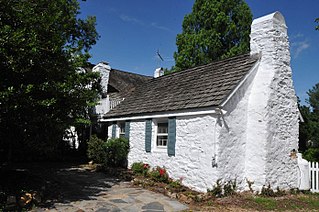
Rectortown Historic District is a national historic district located at Rectortown, Fauquier County, Virginia. It encompasses 76 contributing buildings, 3 contributing sites, and 2 contributing structures in the rural village of Rectortown. The district includes dwellings dating back to the 18th century, churches, a school, an Odd Fellows hall, a post office, multiple commercial buildings, and several cemeteries that illustrate the town's growth and development. Notable buildings include the Maidstone Ordinary, the Rector-Slack Log House, the Ashby House, the Georg Mann House, The Brick Store House, Rector's Warehouse and Station, Denham, Maidstone, Rectortown United Methodist Church (1894), the Jackson-Grant House (1924), Slack's Store (1890), and the Mt. Olive Odd Fellows Lodge (1935).

Rocky Mount Historic District is a national historic district located at Rocky Mount, Franklin County, Virginia. It encompasses 211 contributing buildings, 2 contributing sites, 1 contributing site, and 2 contributing objects in the central business district and surround residential areas of Rocky Mount, county seat of Franklin County. It includes residential, commercial, institutional, and governmental buildings dated from the early- to mid-19th through early 20th centuries. Notable buildings include the Rakes Building (1929), N&W Freight Depot, Mount Pleasant (1828–1829), The Taliaffero Building (1827–1828), The Grove (1850), McCall House, Lodge Rooms (Colored), Trinity Episcopal Church, Rocky Mount Presbyterian Church, Baptist Church (Colored), N. Morris Department Store / Bryd Balm Company, Franklin County Courthouse (1909), Franklin County Jail (1938), Franklin County Library (1940), Rocky Mount Municipal Building (1929), and a Lustron house known as the Davis House (1949). Located in the district and separately listed are the Woods-Meade House and the Greer House.

Newport Historic District is a national historic district located at Newport, Giles County, Virginia. It encompasses 50 contributing buildings and 3 contributing sites in the rural village of Newport. The district includes primarily freestanding single-family dwellings or store buildings of one or two stories, featuring wood-frame construction, wood siding or ornamental metal sheathing, front porches, and associated outbuildings. Notable buildings include the Epling-Dunkley[or Dunklee]-Smith House (1820s-1830s), Keister-Miller House (1846), Robert Payne House (1850s), Payne-Price House, the Miller Building, the Pent Taylor Store, the Miller Brothers General Mercantile Store, F.E. Dunkley [Dunklee] Store, Pasterfield House (1903), Dr. Walter Miller House (1903-1904), Albert Price House (1904), Methodist Parsonage (1909), Newport Methodist Church, and Sinking Creek Valley Bank (1927).

Stanardsville Historic District is a national historic district located at Stanardsville, Greene County, Virginia. The district encompasses 146 contributing buildings, 4 contributing sites, 9 contributing structures, and 8 contributing objects in the Town of Stanardsville. It includes the Courthouse Square district and surrounding commercial and residential areas. Notable buildings include the Stanardsville Methodist Church, Grace Episcopal Church (1901), Lafayette Hotel, Gibbons Store, John Sims house (1850), Greene County Chamber of Commerce, Forest Hill Academy, and Stanardsville Motor Company (1930). Located in the district is the separately listed Greene County Courthouse.

Mineral Historic District is a national historic district located at Mineral, Louisa County, Virginia. It encompasses 222 contributing buildings, 3 contributing sites, and 6 contributing structures in the town of Mineral. It includes a variety of residential, commercial, and institutional buildings built after the town was platted in 1890. Notable buildings include the Gibson House (1915), Turner House, Dr. H. J. Judd House (1906), Odd Fellows Hall (1894), former D.E. Bumpass Department Store, former Mineral Drug Store, Bank of Louisa, C&O railroad depot (1880s), Mineral Crystal Ice Plant, Louisa County Power & Light Plant, Standard Oil Company building (1907), Episcopal Church of Incarnation (1902-1903), Mineral Baptist Church (1906), and the former Mineral School (1927).

Riner Historic District is a national historic district located at Riner, Montgomery County, Virginia. The district encompasses 23 contributing buildings and 1 contributing structure in the village of Riner. It includes a variety of vernacular residential, commercial, and institutional buildings dating from the 1850s to 1920s. Notable buildings include the Methodist Episcopal Church (1908), Bank of Riner (1912–1913), Jonathan E. Hall House / Store, Kinsey-Lawrence House (1908–1909), Dr. Stone Farm, Surface Mill, Auburn United Methodist Church (1885), and Sam Barnett Store.
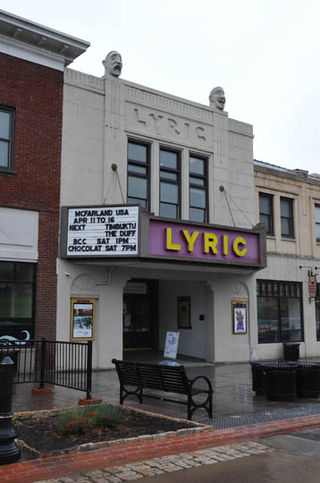
Blacksburg Historic District is a national historic district located at Blacksburg, Montgomery County, Virginia. The district encompasses 137 contributing buildings and 2 contributing sites in the central business district and surrounding residential areas of the town of Blacksburg. The district includes commercial, residential, and institutional buildings in a variety of popular architectural styles including Greek Revival, Gothic Revival, and Colonial Revival. Notable buildings include the Johnson House, Blacksburg Presbyterian Church #1 (1847), Smith-Montgomery House, Croy House, Spout Spring House, Deyerle's Store (1875-1877), W. B. Conway Building, Presbyterian manse (1907), Sheriff Camper House, Christ Episcopal Church, African Methodist Episcopal Church of Blacksburg, Blacksburg Presbyterian Church (1904), Blacksburg Methodist Church (1910), St. Mary's Catholic Church, Hunter's Lodge Masonic Building (1928), Martin-Logan Store, Lyric Theater (1922), and Ellett's Drug Store (1900).

Eastville Historic District is a national historic district located at Eastville, Northampton County, Virginia. The district encompasses 315 contributing buildings, 7 contributing sites, and 4 contributing structures in the county seat of Northampton County. The historic district contains a wide variety of residential, commercial, governmental, educational, social, religious, and funerary resources dating from 1731. Notable buildings include the courthouse (1731), clerk's office, Park Hall, Eastville Inn, Ingleside, Hickory Grounds, Maria Robins House, the Old Brick Store, Abdell Funeral Home, Edward Holland House, and Ailworth Hall. Also located in the district are the separately listed Cessford, Eastville Mercantile, and James Brown's Dry Goods Store.
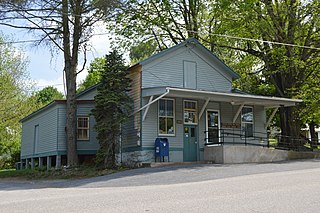
Singers Glen Historic District is a national historic district located at Singers Glen, Rockingham County, Virginia. The district encompasses 65 contributing buildings and 2 contributing sites in the village of Singers Glen. The district retains much of its late 19th-century air and most of its original buildings. Notable buildings include the Glen Farm, The Solomon Funk Farm, Edwin E. Funk House, Swank Store and Post Office, T. Funk and Sons Store (1895), The Carriage Works (1826), Singers Glen Baptist Church (1888), United and Methodist Church. Located in the district is the separately listed Joseph Funk House.
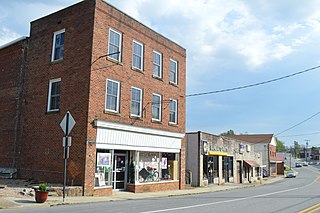
Gretna Commercial Historic District is a national historic district located at Gretna, Pittsylvania County, Virginia. The district encompasses 26 contributing buildings in the central business district of Gretna. The district primarily developed in the early-to-mid-20th century, with buildings dated between about 1881 and 1963. Notable buildings include the Thomas C. and Robert H. Creasy storehouse (1881), Masonic hall (1902), Bank of Elba (1907), Dalton building, W.D. Love and Co. grocery store, Amoco Service Station (1940), former Gretna Fire Station and Town Hall, and Berger Motor Co. (mid-1940s).

Hills and Dales Historic District is a national historic district located at West Lafayette, Tippecanoe County, Indiana. The district encompasses 136 contributing buildings and 39 noncontributing buildings in a predominantly residential section of Lafayette, platted in 1922–1924. It developed between about 1911 and 1951 and includes representative examples of Colonial Revival, Tudor Revival, French Renaissance, and Ranch style architecture. Notable contributing buildings include the Haniford House, Herbert Graves House,, and Marion J. Eaton House.
























